Arup Group or simply Arup is a multidisciplinary architectural service provided by the multinational professional services firm founded in 1946 by engineer Ove Arup. Originally focused on structural engineering, Arup has expanded into a multi-disciplinary company offering engineering, architecture, planning, and advisory services for the built environment. Arup, founded in 1946 by Sir Ove Arup, a Danish-Norwegian engineer, started as a structural engineering practice but later expanded into a multidisciplinary firm offering a range of services. Sir Ove Arup’s vision was rooted in a collaborative approach to produce higher quality and more humane design outcomes. Arup’s global headquarters is located in London, United Kingdom, at 8 Fitzroy Street, where the company was originally founded in 1946. This London office serves as the central hub for Arup’s worldwide operations. In addition to its London headquarters, Arup has established a vast international presence, with more than 90 offices across 34 countries. Notable office locations include major cities in the United States, the Asia Pacific region, Europe, and the Middle East. These interconnected offices enable Arup to deliver projects across various markets, including buildings, transport, energy, and urban design, with 24-hour coordinated delivery capabilities across time zones. Arup Laboratories is led by Chief Executive Officer (CEO) Andy Theurer, who took over the role from Dr. Sherrie L. Perkins upon her retirement on June 30, 2021. With over 30 years of experience at Arup across various leadership positions, Andy Theurer initially served as the company’s Chief Financial Officer, overseeing finances and business strategy, which contributed to Arup’s growth and resilience even during challenging periods like the COVID-19 pandemic. His deep understanding of Arup’s business, finances, and strategic direction made him a natural choice for the CEO position. Arup has been involved in numerous famous projects that have left a significant mark on the architectural landscape. Some of their most iconic projects include the Sydney Opera House, Centre Pompidou in Paris, the City of Manchester Stadium in England, 30 St Mary Axe (The Gherkin) in London, Beijing National Aquatics Center (Water Cube), Guangzhou Opera House in China, Kansai International Airport in Japan, Kingdom Centre in Saudi Arabia, Singapore Sports Hub, and Taichung Metropolitan Opera House in Taiwan. Applying to work for Arup typically involves submitting an online application through their careers website. Candidates can select job openings related to their field, such as architecture roles, and complete the online application form. This form gathers the candidate’s background, qualifications, portfolio examples, and motivations. Requirements for architecture roles include a professional architecture degree, CAD software skills, and a strong portfolio. The interview process often includes phone or video screening, in-person interviews, and assessment centers, assessing technical expertise, problem-solving abilities, communication skills, and teamwork capacities.
What is Arup Group?
Arup Group is a global professional services firm founded in 1946 by Engineer Ove Arup. Originally focused on structural engineering, Arup has expanded into a multidisciplinary company offering engineering, architecture, planning, and advisory services related to the built environment. Arup currently has over 300 architects as part of their global practice. Their architectural services aim to harness imagination, technical rigor, and experience to create innovative and remarkable outcomes for clients. Arup’s approach to architecture prioritizes designs that are purposeful, simple, efficient, and beautiful – reflecting both their clients’ goals and the wider needs of society. This ethos of “Total Architecture” was established by Ove Arup himself, who believed engineering and architecture should work closely together to produce high-quality and enduring buildings and spaces that enhance the human experience. Some signature Arup architectural projects over their 75+ year history include collaborating on the structural design of the Sydney Opera House, the Centre Pompidou in Paris, the tent-like roof of Denver International Airport, and the Beijing National Aquatics Center (the “Water Cube” building for the 2008 Olympics). More recent projects include the Fulton Center subway station in New York City, the Leeza Soho skyscraper in Beijing, and the new Warner Bros. Studios Leavesden in the UK. Across all these projects and many more worldwide, Arup’s multidisciplinary teams of architects, engineers, and other consultants work together closely from initial design through construction, exemplifying Arup’s “Total Architecture” philosophy to create iconic and technically innovative buildings.
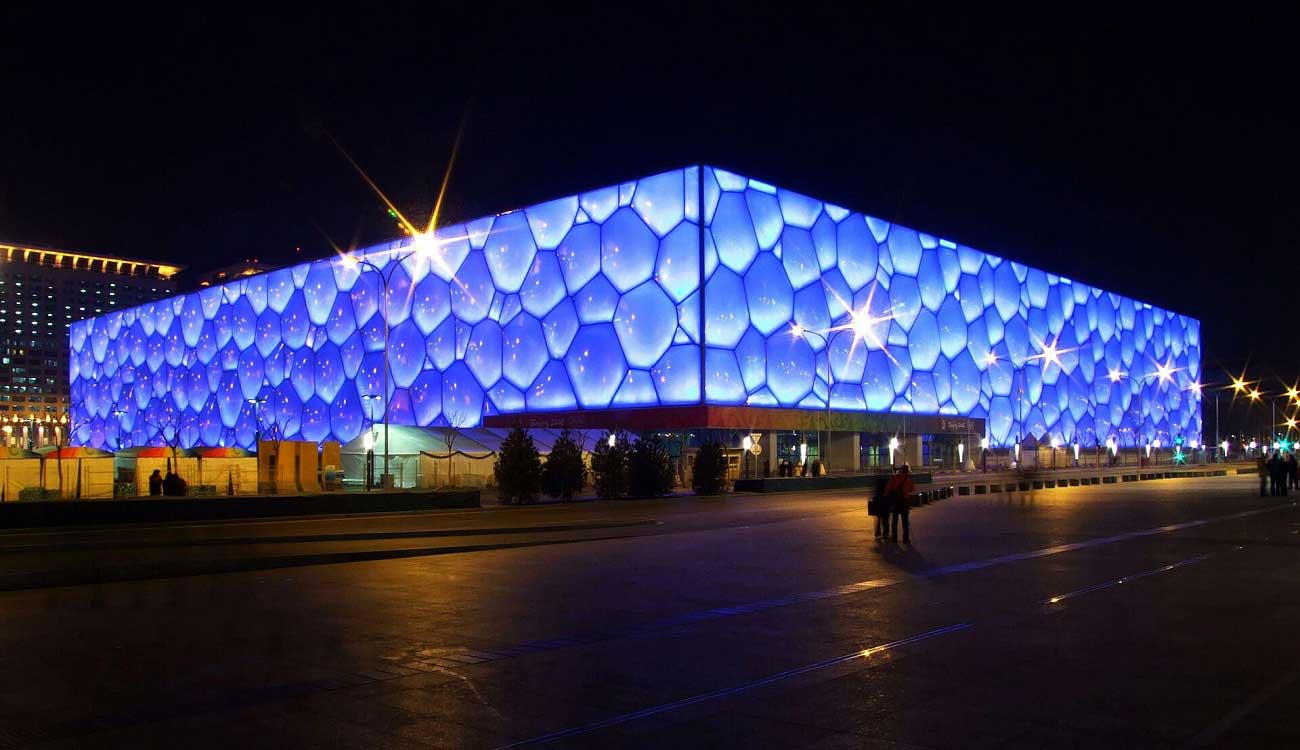
What is the history of Arup?
Arup was founded in 1946 in London by Sir Ove Arup, a Danish-Norwegian engineer. Originally called Ove N. Arup Consulting Engineers, the firm started as a structural engineering practice but later expanded into a multidisciplinary company offering services across the built environment spectrum. Ove Arup had previously worked for various construction firms and met pioneering modern architects like Walter Gropius while in London. During World War II he led major defense infrastructure projects before deciding to start his firm after the war, motivated by the belief that a more collaborative engineering approach could produce higher quality and more humane design outcomes. In its early years, Arup collaborated on now-iconic buildings like the Sydney Opera House, with Arup’s revolutionary structural engineering enabling the signature sail-like design. Over time the company grew steadily by attracting talented engineers across disciplines, developing innovative techniques like using precast concrete and structural adhesives. By 1970 when Ove Arup retired, the company had 24 years of history and over 1,000 staff in three countries.
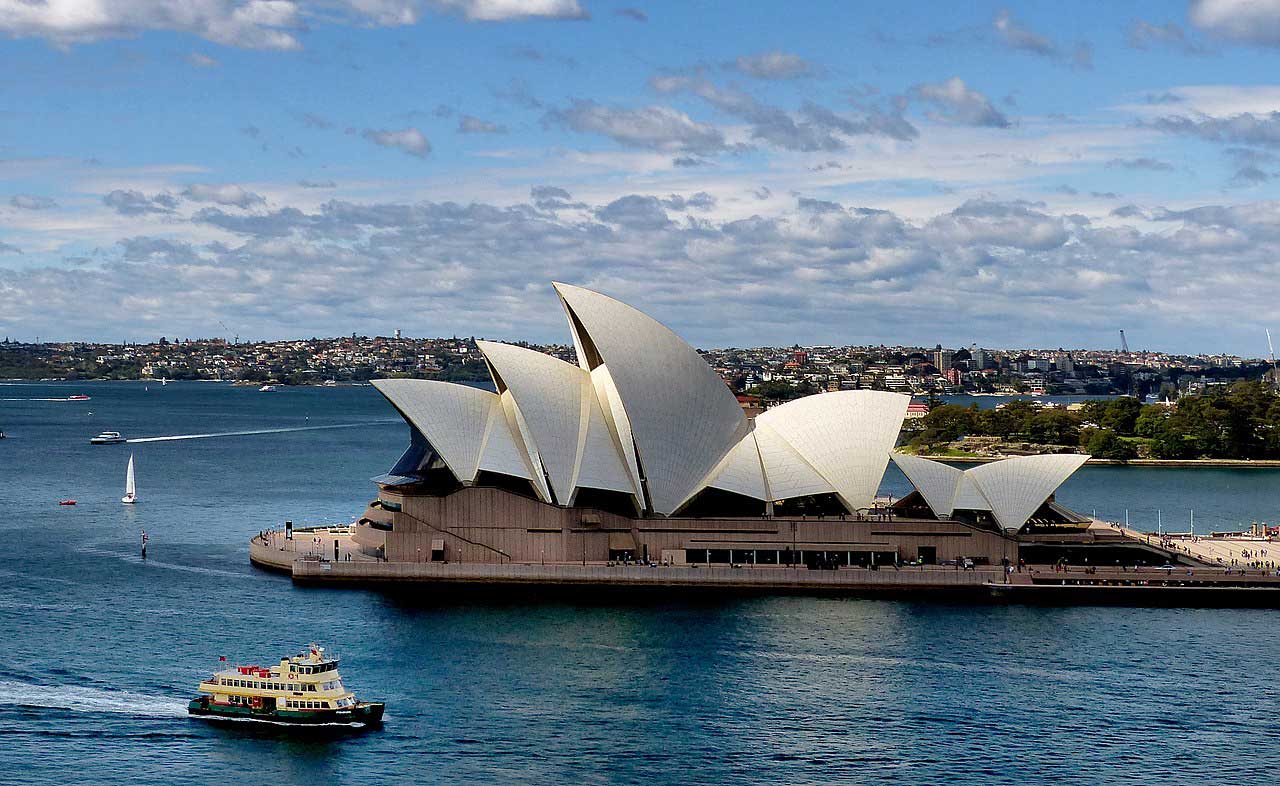
Ove Arup left behind guiding principles for the company’s future growth and culture in his historic “Key Speech” around retirement. This speech outlined six core aims, including excellence in quality of work, integration of architecture and engineering (“Total Architecture”), and maintenance of a positive, collaborative organizational culture. The Key Speech principles still guide the Arup Group today. Now consisting of over 90 global offices with around 17,000 staff, Arup has expanded vastly since its early years while retaining its original mission and employee-owned structure. From its role in structures like the Centre Pompidou, Denver Airport, and Beijing’s “Water Cube” to recent work on projects like New York’s Fulton Center and the Leeza Soho Tower in Beijing, Arup’s 75+ year history reflects a continuing legacy of imagination and technical ingenuity across the built environment.
Where is Arup located?
Arup Group’s global headquarters is located in London, United Kingdom, at 8 Fitzroy Street, where the company was originally founded in 1946 by Sir Ove Arup. London is the central hub for Arup’s worldwide operations, representing the heart of the organization’s inception and growth. Apart from its London headquarters, Arup boasts a sprawling international presence with a network of more than 90 offices spanning 34 countries. Notable office locations include the United States, Arup maintains a significant presence with over 12 offices and a workforce of 1,400 professionals. Key American locations encompass cities such as New York, San Francisco, Los Angeles, Chicago, Houston, Boston, and Washington DC. The New York office, located at 77 Water Street in Brooklyn, is the largest among Arup’s U.S. offices.
In the Asia Pacific region, Arup’s major offices include strategic locations in Shanghai and Hong Kong (Greater China), Sydney and Melbourne (Australia), Singapore, Jakarta (Indonesia), Manila (Philippines), and Tokyo (Japan). In Europe, alongside its London headquarters, Arup maintains significant European offices in prominent cities like Berlin and Frankfurt (Germany), Madrid (Spain), Amsterdam (Netherlands), and Dublin (Ireland). The Middle East is also a pivotal region for Arup, with Dubai serving as the central hub for its Middle East headquarters. Additional offices are established in Abu Dhabi and Doha (Qatar). Arup’s extensive office network empowers the firm to undertake projects across diverse markets, including buildings, transport, energy, and urban design. The interconnected nature of these offices, facilitated by collaborative systems, enables seamless, 24-hour coordination and project delivery across multiple time zones, reflecting Arup’s commitment to providing comprehensive and efficient services worldwide.
What does Arup focus on building?
Arup focuses on area sustainable and net zero building design. Arup aims to design high-performance buildings with minimal environmental impact, utilizing strategies like building retrofits, parametric design, AI and machine learning, biophilic principles, and renewable energy. They have designed many sustainable buildings certified under systems like LEED and BREEAM. Arup also developed their design framework focused on sustainability targets like net zero emissions, circularity, and wellbeing. Another major focus is designing buildings to actively support health, wellness, and well-being through accessible stairs, views, air quality monitoring, and layouts promoting social spaces and interaction. They leverage sensor data and AI to monitor and optimize conditions. Arup’s own New York office has a Fitwel healthy building certification. Arup also specializes in intelligent and technologically advanced buildings. They design smart systems that connect disparate building data sources into unified platforms, enabling advanced analytics, automation, efficiency optimization, costs, and operations. They aim to reduce waste through strategies like design for disassembly and developing buildings that can flexibly change over time rather than be demolished. Their Circular Buildings Toolkit helps put these principles into practice.
Who is the owner of Arup Group?
Arup was founded by the visionary Danish structural engineer and philosopher Sir Ove Nyquist Arup, who founded the firm in 1946. Born on April 16, 1895, in Newcastle upon Tyne, England, Sir Ove Arup’s legacy is marked by his significant contributions to engineering. He received his education at the University of Copenhagen and the Polyteknisk Læreanstalt. Sir Ove Arup undertook notable projects that have left an indelible mark on the architectural landscape, including the iconic Sydney Opera House, the groundbreaking Centre Pompidou, and the innovative Kingsgate Bridge. His remarkable achievements garnered him prestigious awards and honors, including the Gold Medal from the Institution of Structural Engineers and recognition from the Royal Institute of British Architects. Sir Ove Arup’s journey commenced with his early work for construction companies, eventually leading to the formation of “Arup & Arup Limited” in 1938 alongside his cousin Arne. In 1946, he established his consulting engineering firm, initially known as “Ove N. Arup Consulting Engineers,” which later adopted the simplified name, Arup.
Who is the CEO of Arup?
Andy Theurer is the Chief Executive Officer (CEO) of Arup Laboratories, having taken over the role from the previous CEO, Dr. Sherrie L. Perkins, when she retired on June 30, 2021. Theurer has over 30 years of experience at Arup across various leadership positions. He served as the company’s Chief Financial Officer starting in 2000, overseeing finances and business strategy. This enabled Arup to achieve revenue and earnings growth even during challenging periods like the COVID-19 pandemic. In 2017, Theurer was appointed President of Arup while Dr. Perkins became CEO. They worked closely as a team to stabilize and strengthen the foundation of the company after a period of frequent leadership changes. When Dr. Perkins retired in 2021, Theurer was seen as the natural next choice for CEO, given his thorough understanding of Arup’s business, finances, and strategic direction.
What is the mission of Arup?
The mission of Arup is to shape a sustainable built environment that balances the needs of people, places, and the planet. As a global sustainable development consultancy, Arup aims to create safe, inclusive, and resilient communities, infrastructure, and cities. This mission permeates all aspects of their work across over 140 countries. Specifically, Arup strives to promote sustainable development through the projects they deliver for clients. Their strategy “Creating Sustainable Futures” encapsulates their purpose to drive positive economic, social, and environmental change on a global scale. They aim to bring this vision to life through excellence in design, engineering, and consulting services tailored to each client’s goals while upholding their sustainability commitments. Integral to Arup’s mission is their independence and trust ownership structure which empowers them to choose work where they can make a meaningful impact. Additionally, Arup prioritizes knowledge sharing and collaboration to multiply their positive influence. They build partnerships, engage communities, develop new sustainability initiatives, and support research to disseminate learning about the built environment.
What are the most famous projects of Arup?
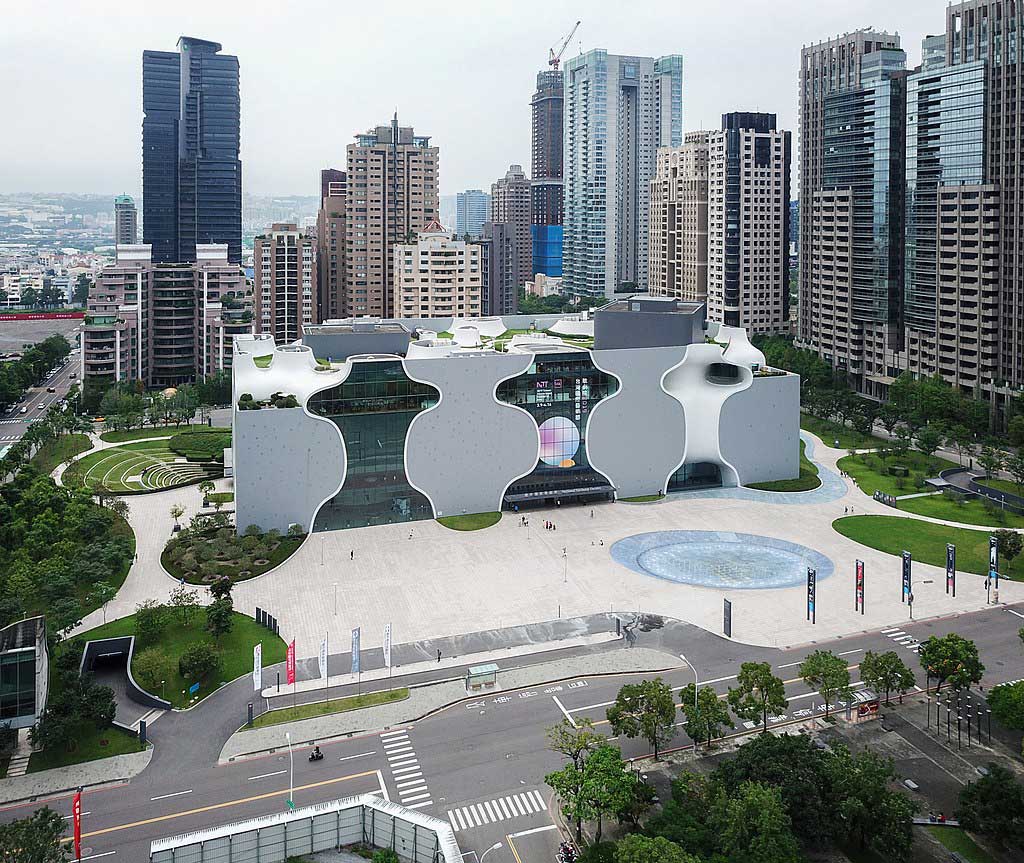
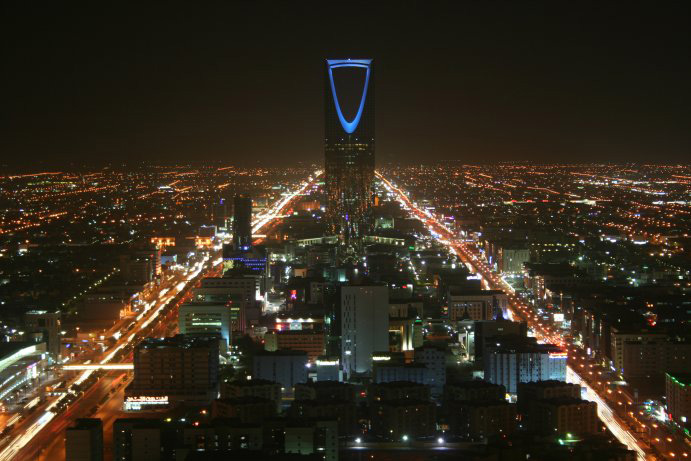
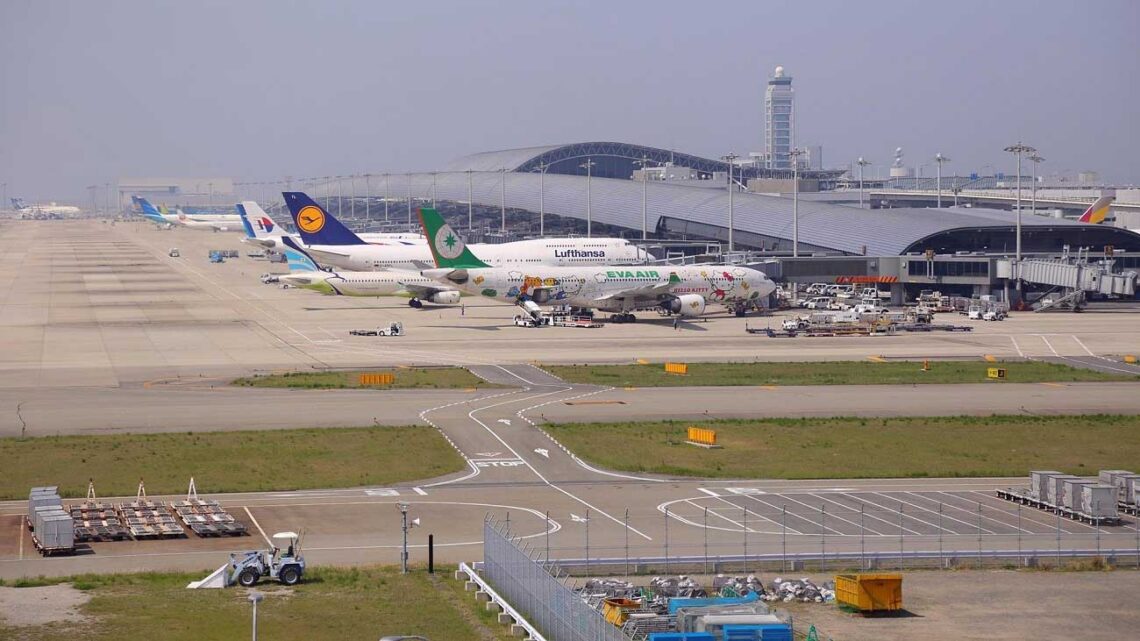
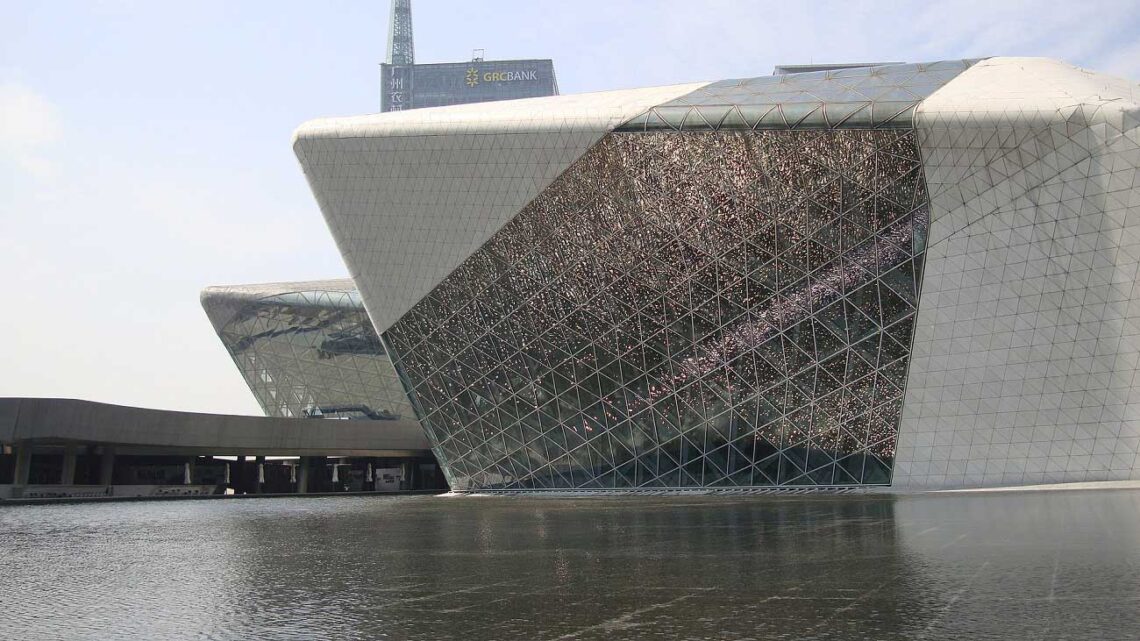
Listed below are the famous projects of Arup:
- Sydney Opera House in Australia: The Sydney Opera House is one of the world’s most famous and iconic buildings. Designed by Danish architect Jørn Utzon, its distinctive sail-like shells and waterfront location have made it a globally recognized symbol of Sydney and Australia. Construction began in 1959 under the lead engineering of Ove Arup. The complex concrete shell structure presented significant challenges, requiring innovative techniques like spherical geometry and computer analysis. Arup worked closely with Utzon to realize his visionary design through pioneering engineering. After a lengthy construction, the Sydney Opera House finally opened in 1973, launching a new era of performing arts in Australia.
- Centre Pompidou in Paris, France: The Centre Pompidou in Paris is one of the most radical and influential works of high-tech architecture. Designed by Renzo Piano and Richard Rogers with engineering by Arup, it opened in 1977 as a multi-disciplinary cultural center housing modern art, music, library, and performance spaces. The building features an exoskeleton structure with its services, including ducts and escalators, located on the exterior. This innovative inside-out design allowed for maximum flexibility in the interior spaces. Arup helped realize the architects’ vision through close collaboration, solving significant structural challenges.
- City of Manchester Stadium in England: The City of Manchester Stadium was constructed as the centerpiece venue for the 2002 Commonwealth Games held in Manchester. Its functional form features spiral ramps and a tensile cable roof structure. After the Games, the stadium was converted into a football venue to become the new home of Manchester City Football Club. Arup oversaw modifications to transform the athletics arena into an enclosed, football-focused stadium while retaining the original architectural drama. The resulting venue combines iconic design with multi-use flexibility.
- 30 St Mary Axe in London, England: Widely known as “The Gherkin”, 30 St Mary Axe is an iconic London skyscraper designed by Foster + Partners with Arup. Completed in 2004, its elegant curved diagrid structural system was engineered by Arup, enabling the unconventional aerodynamic form. The 180 m tall tower is an example of sustainable tall building design. Energy-saving strategies include the building’s tapered profile, automated blind system, and spiraling atria for natural ventilation. 30 St Mary Axe set new environmental benchmarks for commercial towers.
- Beijing National Aquatics Center in China: Beijing’s National Aquatics Center, nicknamed the “Water Cube”, was constructed as the swimming venue for the 2008 Summer Olympics and designed by PTW Architects with Arup. Its distinctive lightweight steel frame and ETFE cushion facade form a shimmering cube enclosing the pools. Arup engineered the complex double-curved geometry of both the steel structure and the ETFE cladding. Overcoming significant technical challenges, the building pioneered construction techniques for future projects. At the time of its completion, the Water Cube was the largest ETFE structure in the world.
- Guangzhou Opera House in China: Guangzhou Opera House is an art landmark designed by Zaha Hadid Architects and engineered by Arup. Opened in 2010, the building features a curved shell structure housing the main performance hall and an accompanying multifunction hall. Arup provided structural, mechanical, and facade engineering to help realize the architect’s fluid design. Double-curved concrete shells envelop the performance spaces, supported on diagonally arranged concrete columns at the base. Advanced analysis informed the complex geometry.
- Kansai International Airport: Kansai International Airport in Osaka Bay, Japan was designed by Renzo Piano Building Workshop with Arup and opened in 1994. Built entirely on reclaimed land off the coast, the airport features a monumental long passenger terminal designed to withstand earthquakes and typhoons. Arup provided pioneering structural and marine engineering leadership for the project. The terminal’s combined steel truss and reinforced concrete structure rests on vertical piles extending through the reclaimed island’s soft soils down to bedrock. Custom joints allow the building to respond smoothly to seismic events.
- Kingdom Centre in Saudi Arabia: The Kingdom Centre in Riyadh, Saudi Arabia is an iconic skyscraper featuring a distinctive inverted parabolic arch. Designed by Ellerbe Becket with Arup, at the time of its 2002 opening it was the world’s tallest building clad entirely in glass. Arup engineered the steel diagrid structure which fans out at the base to form the dramatic arch before tapering back in. Glass cladding the entire exterior minimizes solar gain in the hot climate while allowing spectacular views. Advanced computer analysis informed the complex geometry.
- Singapore Sports Hub in Singapore: The Singapore Sports Hub is a 35-hectare sports and entertainment district centered around the new National Stadium. Arup engineered the stadium’s signature retractable roof – a cable net structure to cover all seats. The lightweight, single-layer cable roof system is specially adapted to suit Singapore’s climate. Retracting or closing the roof creates open-air or air-conditioned mode as required. Arup’s design ensures clear sightlines for spectators while reducing the stadium’s environmental impact.
- Taichung Metropolitan Opera House in Taiwan: The Taichung Metropolitan Opera House in Taiwan opened in 2016 as a world-class performance venue designed by architect Toyo Ito with structural design by Arup. Distinctive double-curved concrete shells enclose the main hall and lobby spaces in a simple, graceful form. Arup’s expert structural engineering enabled the realization of the architect’s free-flowing concept. The building comprises only walls and roofs, with vertical structural supports eliminated.
Who are the most important clients of Arup?
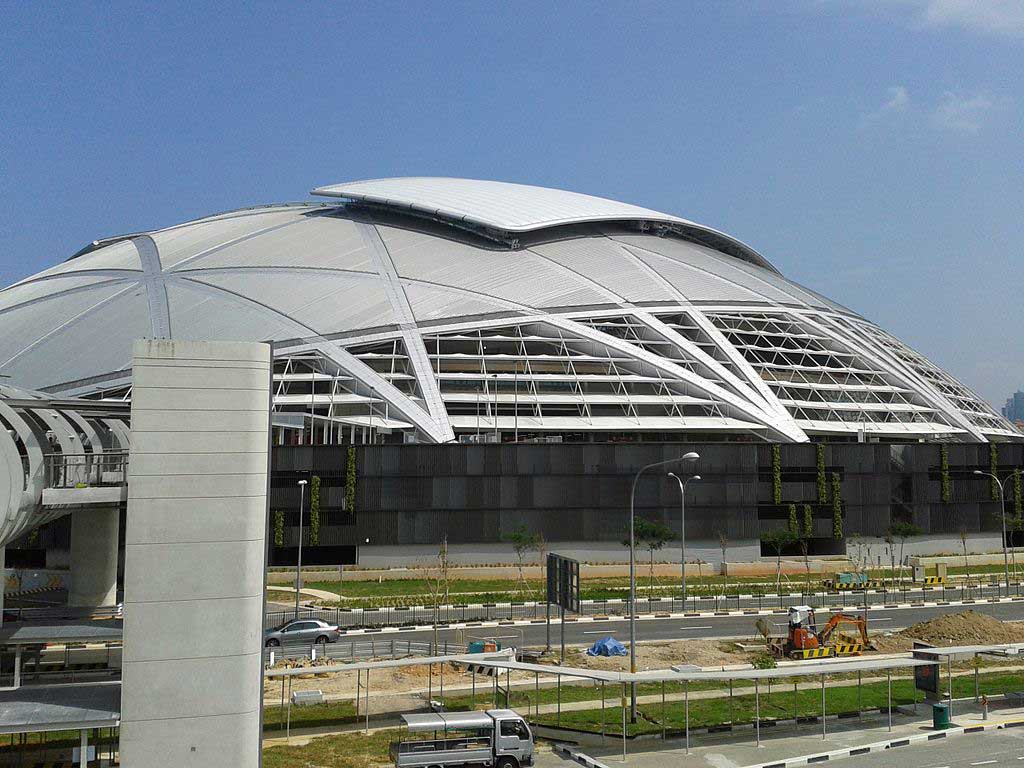
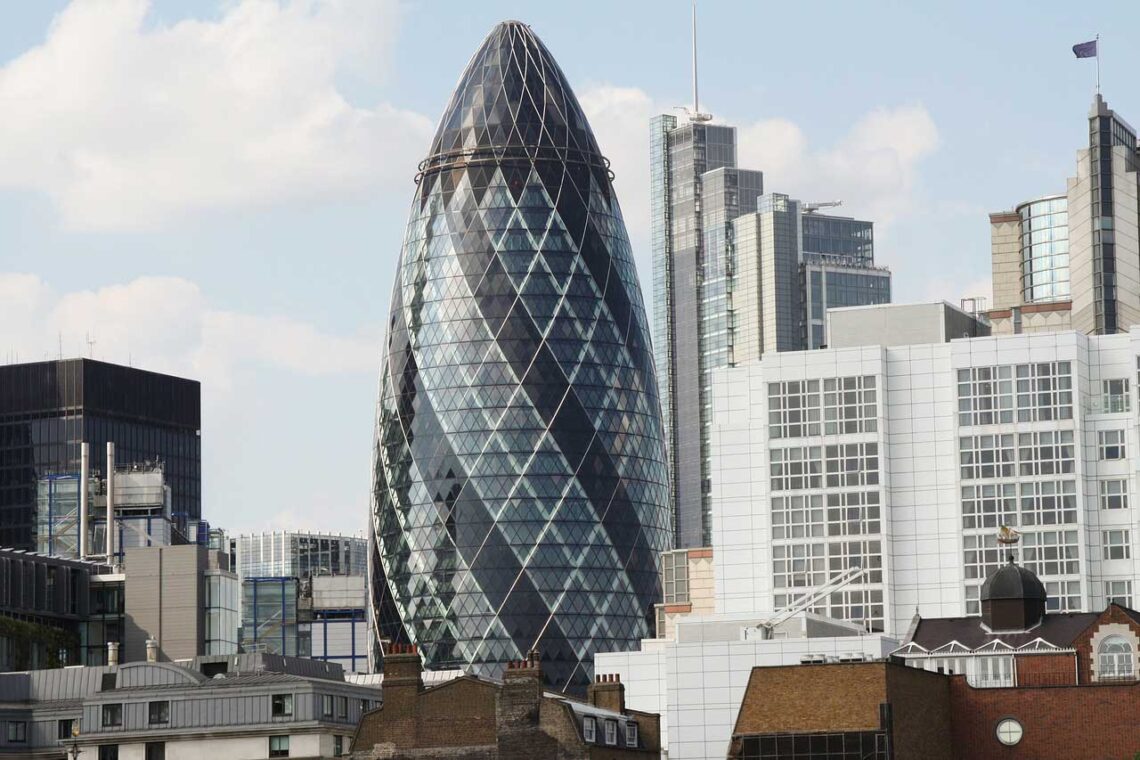
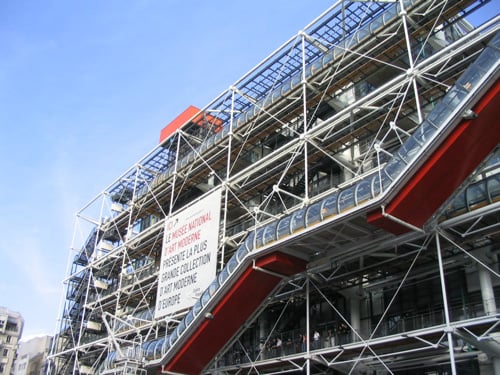
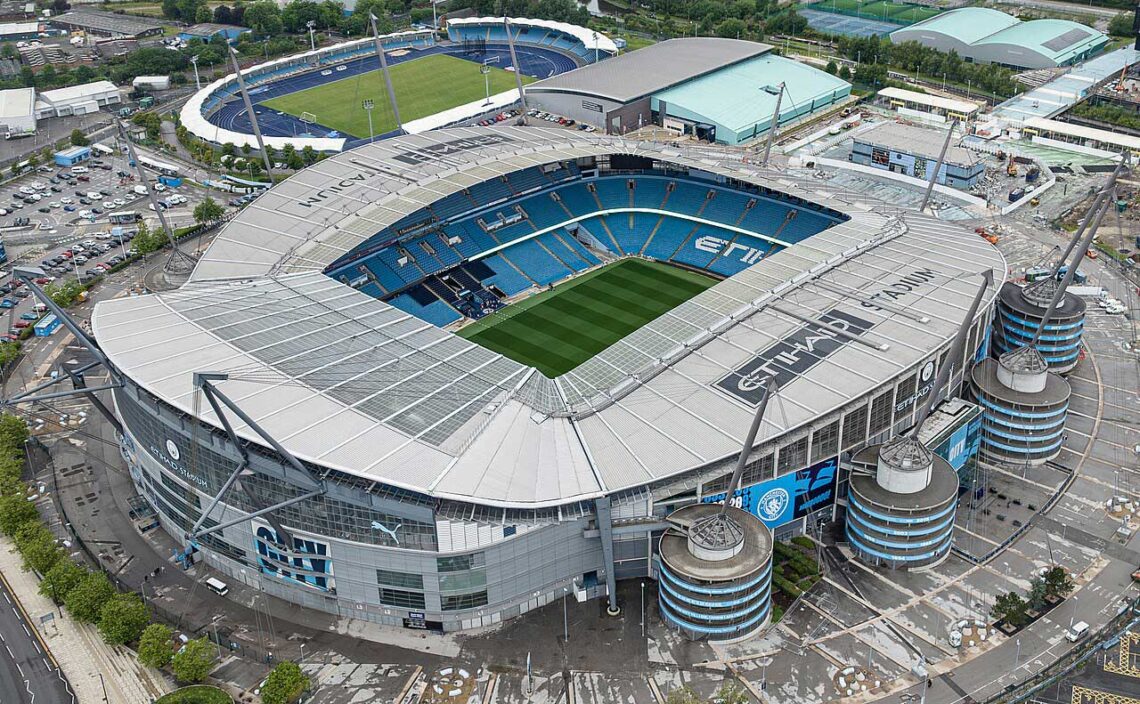
Listed below are the most important clients of Arup:
- Government agencies: Government agencies partner with Arup on major public infrastructure projects like transport, waste management, and civil engineering. Clients include Transport for London, NYC Department of Design and Construction, and High Speed 2. Arup brings global expertise to address local needs and shape accessible, resilient cities. They support policymakers with research, analysis, modeling, planning, and engineering across infrastructure sectors.
- Cultural institutions: Cultural institutions choose Arup to engineer iconic concert halls, museums, and theaters based on their experience with buildings like the Sydney Opera House and Guggenheim Bilbao. Arup focuses on realizing the client’s creative vision through engineering excellence. They optimize acoustics, materials, lighting, and design to produce exceptional spaces for art and performance.
- Commercial developers: Top commercial developers partner with Arup on ambitious skyscrapers, mixed-use complexes, airports, and data centers. Long-term clients include Brookfield, Swire, and Mitsubishi Estate. Arup provides advisory services, design, and technical consulting to improve building performance, help secure funding, and address local site conditions.
- Architectural firms: Arup collaborates with leading architectural firms like Zaha Hadid, Foster + Partners, and Renzo Piano on groundbreaking buildings enabled by engineering innovation. Most projects involve architect partners. Arup brings rigorous structural and MEP engineering to turn creative designs into constructible, high-performing buildings.
- Universities: Universities tap Arup to engineer complex campus buildings and infrastructure, working with top architectural firms. Academic clients include Oxford, Cambridge, the National University of Singapore, and Cornell Tech. Projects span specialized labs, classrooms, dorms, and performance venues integrated with campus infrastructure.
- Technology companies: Tech companies like Apple, Google, IBM, and Amazon choose Arup to engineer data centers and specialized facilities with complex structural and MEP systems. Arup brings expertise in advanced structural materials, building physics, and sustainability to create state-of-the-art technical spaces.
- Professional sports teams/leagues: Arup plans innovative stadiums and arenas for NFL, NBA, and Premier League teams. Venue projects include the Singapore National Stadium, Tottenham Hotspur Stadium, and Oakland Arena. The firm contributes advanced structural engineering, acoustics, lighting, and venue technology design.
- Healthcare systems: Healthcare providers select Arup to engineer leading hospitals and medical research centers requiring complex structural and building services engineering. Projects include Great Ormond Street Children’s Hospital. Arup optimizes clinical spaces and building systems for patient experience, operations, and sustainability.
- Sovereign wealth funds: Government-owned investment funds often back Arup’s work on flagship development projects, like the King Abdullah Financial District in Riyadh, Saudi Arabia developed by Al Raidah Investment Company. These high-profile schemes leverage Arup’s multidisciplinary design skills and local delivery capability.
- Airports/airlines: Arup delivers engineering services for major airport expansions, working with authorities and carriers. Key aviation clients include Changi Airport Group, British Airways, and Cathay Pacific. Projects involve new terminals, infrastructure modernization, capacity upgrades, and passenger experience improvements.
What is the address of Arup Group?
Arup Group maintains regional headquarters in the Americas, with its main office located at Suite 700, 560 Mission St, San Francisco, CA 94105, United States. Other significant Arup offices in the United States can be found in New York (77 Water St, Brooklyn, NY 10013), Los Angeles (900 Wilshire Blvd, Los Angeles, CA 90017), and Chicago (35 E Wacker Dr #1800, Chicago, IL 60601). Furthermore, Arup extends its reach to the Asia Pacific region, with its headquarters at 17/F Dorset House, Taikoo Place, 979 King’s Road, Quarry Bay, Hong Kong. The company boasts a workforce of over 17,000 individuals spanning over 90 disciplines and operating from 350 offices in 38 countries. Arup’s original and current global headquarters is situated at 8 Fitzroy Street, London W1T 4BQ, United Kingdom, where it functions as the company’s corporate center.
What is the contact phone number of Arup?
The phone number for Arup’s Sydney office is +61 2 9320 9320. The Melbourne office can be reached at +61 3 9668 5500. Arup has over 1,300 staff working across 8 offices in major Australian cities like Sydney, Melbourne, Brisbane, Perth, Adelaide, Canberra, Gold Coast and Cairns. Each local office handles its inquiries and projects relevant to that region. Contact details, including phone numbers, are provided for each Australian office on Arup’s website. Arup has a decentralized structure, with each office managing regional needs. Getting in touch with the local Australian office most relevant to one’s location and interests is the recommended approach, rather than trying to reach a centralized HQ number.
How to apply to work for Arup?
Here are the steps on how to apply for Arup:
- Contact information: In applying for a job at Arup, you can visit their website at www.arup.com/careers. You can also contact them via email at [email protected] or through their social media platforms.
- Finding open positions: To see open positions related to your field, such as architecture roles, you can visit their website and browse their current job openings. You can filter the search results by location, job function, and experience level to find the most suitable job.
- Submitting an application: The application process at Arup begins with submitting an online application form through their careers website. The form asks for your background details, qualifications, portfolio examples, and motivations over 20 minutes. To be qualified for architecture roles, you typically need a professional architecture degree like a B.Arch or M.Arch from an accredited university program. You should be working towards licensure with a relevant architecture association. Once you have submitted your application, you will receive a confirmation email from Arup.
- Interview process: The interview process often starts with a phone or video screening interview. Through behavioral and situational questions, you are assessed for technical expertise, problem-solving abilities, communication skills, and teamwork capacities. An in-person interview further evaluates you through similar competency-based questions. The assessment center can involve individual technical exercises testing your architecture knowledge. There may also be group exercises to showcase teamwork. You may meet current employees and tour facilities virtually. The interview process at Arup is designed to ensure that they hire the best candidates who are a good fit for their organization.
What style of architecture does Arup represent?
Arup encompasses a wide architectural spectrum of building types, including stadiums, offices, transport hubs, laboratories, and more, spanning various sectors. Remarkably, Arup refrains from adhering to a distinct stylistic signature, opting instead to tailor their designs to the unique requirements of each project. As an engineering-led firm, Arup places a premium on technical rigor, performance, and design excellence. Their architecture harnesses the collective capabilities of the organization to address intricate challenges, ensuring that each structure not only embodies high-quality design but also delivers on performance and sustainability objectives.
How important is it for architecture firms to follow the architecture fundamentals?
Architecture is important for architecture firms to follow the architecture fundamentals spanning design excellence, business operations, collaborative processes, and ethical integrity. Firstly, architecture practices must demonstrate strong design capabilities rooted in aesthetics, spatial relationships, sustainability, contextual sensitivity, and engineering principles. Mastery of these technical skills and design thinking allows firms to meet client needs and create innovative, quality buildings. Secondly, firms should stay updated on emerging technologies, materials, codes, and best practices to maintain high standards. However, the design is only one piece. Running an architecture business requires strategic planning, financial management, marketing, HR, IT, and legal expertise. Lastly, Firms must operate efficiently and profitably to remain viable. Understanding business fundamentals is vital. Firms should collaborate across specialties and gather stakeholder input throughout a project.
Should all architecture companies have a portfolio?
Yes, a portfolio is an important component for any architecture firm, regardless of size or years in business. An architecture portfolio serves multiple important purposes, making it invaluable for companies in this field. Firstly, a portfolio showcases a firm’s design capabilities and past work to potential clients. It provides visual evidence of their experience and skills, helping clients evaluate expertise and fit for a project. For less established firms, the portfolio builds credibility through demonstrated project knowledge. More experienced firms use their portfolio to highlight signature styles and technical competencies. Secondly, portfolios assist with marketing efforts, proposals, and bids. Firms can tailor portfolios to specific RFPs or target client types by featuring relevant projects. The portfolio becomes a sales tool and the portfolio website is a 24/7 resource for prospective clients researching options. Lastly, the portfolio helps recruit talent by giving candidates a window into the firm’s design aesthetic and values. It communicates the types of projects and roles available. The portfolio showcases the kind of work employees can expect to produce.


